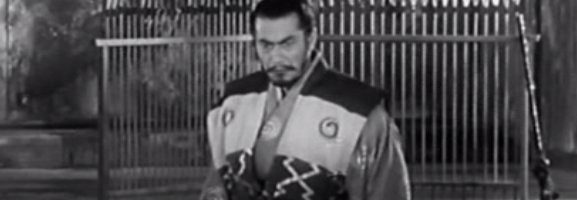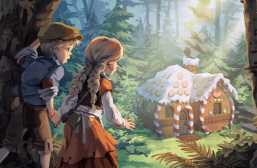‘Throne of Blood’: Exploring how Shakespeare can be Adapted Without the Bard’s Dialogue

The translation from stage to screen almost always brings about changes, for better or for worse. From Hollywood’s neutered version of A Streetcar Named Desire in 1951 to the more respectful screen collaborations between director Nicholas Hytner and revered playwright Alan Bennet; changes to a play are almost inevitable in the translation to film. However, Akira Kurosawa’s 1957 film Throne of Blood adapts Shakespeare’s play Macbeth without using a single word of the Bard’s famous dialogue. There is no ‘Double, double toil and trouble’ or ‘Is this a dagger I see before me’. The film is in Japanese and yet it manages to capture the essence of what makes this English play so great. How does Kurosawa achieve this without using any of the amazing language that Shakespeare is known for?
For those that do not know the story of Macbeth, here is a brief summary: Macbeth and Banquo are thanes to the Scottish King Duncan. Three witches tell Macbeth that he will become king and they tell Banquo that his sons shall be kings. After much persuading from his wife, Lady Macbeth, Macbeth murders Duncan to become king. As the play progresses he succumbs to madness, orders Banquo’s death and quickly becomes a ruthless leader. In the midst of his tyranny, Macbeth orders the death of Macduff’s family, who is another thane. Macduff joins forces with Duncan’s son Malcolm and the English General Siward to overthrow Macbeth and restore Malcolm to the throne. Macbeth consults with the three witches again and they tell him that ‘none of woman born shall harm Macbeth.’ He arrogantly reads this as a sign of his own invincibility. When facing the corrupt king in battle however, Macduff reveals that he was ‘from his mother’s womb untimely ripp’d.’ He kills Macbeth, thereby restoring Malcolm to the throne.
Whilst Throne of Blood avoids using any of Shakespeare’s dialogue, the film makes effective use of image, sound and silence to create an atmospheric adaptation. The film opens on a bleak landscape that is shrouded in fog. No music is playing and only the sound of a howling wind can be heard, before a chorus chants:
A proud castle stood in this desolate place
Its destiny wedded to a mortal’s lust for power
Here lived a warrior strong yet weakened by a woman
Driven to add his tribute to the throne of blood
The devil’s path will always lead to doom
This cryptic chant and the accompanying music establish a fearful atmosphere. The fog adds a feeling of uncertainty. Already Kurosawa has seemingly departed from the original play. The opening stage directions tell us that there is meant to be ‘Thunder and Lightning’, but instead Kurosawa has opted for a quieter opening to his telling of the story. He has also chosen to have an unknown chorus serve the function of a prologue, whereas Shakespeare opens the play with the three witches plotting to meet Macbeth. However, Kurosawa’s changes were made with the original text in mind. The witches end the first scene of the play with the famous lines: ‘Fair is foul and foul is fair: / Hover through the fog and filthy air.’ These lines convey ambiguity and tell the audience not to trust their perceptions. The mention of ‘filthy air’ also suggests that corruption will play a part in the events to come. Kurosawa has taken these lines and communicated their meaning through image and sound in his opening scene. The fog is now literal, establishing doubt and unease in the audience. The presence of an unseen chorus also embodies the uncertainty of the line ‘fair is foul and foul is fair’. Do these voices belong to the witches? Are they physically present in the scene? Where are they?
This uncertainty is applied to Washizu (Macbeth) and Miki (Banquo) when they first appear. At first they are lost in Cobweb Forest, just like flies. When they finally leave the forest, they ride around in the fog aimlessly for nearly three minutes. There is no dialogue, just the sound of horses galloping and the haunting score occasionally swelling in volume. On paper this sounds boring, but it adds to the unnerving atmosphere, as well as creating a sombre, contemplative mood. The silence means that the audience is left to reflect on the witch’s predictions, just like Washizu and Miki are. Kurosawa familiarises the audience to his characters, just as Shakespeare does in the play. The difference is that Kurosawa does this through total silence, whereas Shakespeare does so with words.
Kurosawa frequently avoids dialogue in the most striking moments of the film. In the moments leading up to Lord Tsusuzki’s (King Duncan) murder, sound is used sparingly to increase the tension. Washizu’s wife Asaji (Lady Macbeth) slowly walks around the set, preparing the murder. Aside from the occasional music cue, the only sound is the swish of Asaji’s gown against the floor, which makes a frighteningly eerie noise. Her appearance is also unnerving because of the costume’s stark whiteness, which stands out against the dark background, and makes her look suspiciously similar to the witch in the film.

Perhaps the darkest moment in the film is at the end of the banquet scene. In the play, Macbeth is told by the murderers that they have successfully killed his former friend Banquo, before he sees Banquo’s ghost at the banquet. In Throne of Blood, Washizu sees Miki’s ghost before the murderer informs him that Miki is dead. The murderer even brings Miki’s severed head. This adds a more gruesome element to an already haunting scene, but the true horror comes from what happens when the murderer tells Washizu that he failed to kill Miki’s son. In the play, Macbeth is merely angry. In Throne of Blood, Asaji leaves before Washizu kills the murderer. The camera does not move and stays on Washizu as he watches the murderer die slowly from his wounds. Again, no words are spoken and the only sounds come from the dying man. It is a chilling shot that lets the audience know the sheer evil of Washizu at this point in the film, without using a single word of Shakespeare’s dialogue.
Throne of Blood takes liberties with the plot of Macbeth as well as the language. Probably the biggest change from the play is the relationship between Washizu and Noriyasu (Macduff). Macduff kills Macbeth at the end of the play to avenge the deaths of his wife and son, who Macbeth had ordered to be killed. In Act 4 Scene 2, the murder of Macduff’s family is shown. No such scene takes place in Throne of Blood and no mention of Noriyasu’s family is made. His role in the film is far less important than Macduff’s role in the play. He flees with Kunimaru (Duncan’s son Malcolm) after Tsusuzki’s murder and is not seen again until they march on Cobweb Castle, against Washizu. This leads to the most famous scene in the entire film: Washizu’s death. In the play, Macbeth is killed off-stage and his head is cut off. Throne of Blood dispatches it’s main character by having his own soldiers betray him, just as he betrayed Tsuszuki. Washizu is continually pelted with arrows until one goes right through his neck. The scene is prolonged as he desperately tries to escape the constant volleys. The arrows sticking out of his body make Washizu look absurd in death. This, along with his terrified screaming (apparently some of the arrows being fired at actor Toshirô Mifune were real to provoke a genuine reaction from him) makes the character sympathetic in death, despite the evil he has done throughout the film.
What makes Throne of Blood such a remarkable Shakespeare adaptation is the film’s fearlessness. It uses disturbing imagery and sound rather than language to reproduce Shakespeare’s greatness. The film is also not afraid to add or remove parts of the play’s original plot. For instance, Asaji gives birth to a stillborn baby, whereas Lady Macbeth cannot have children. This bravery with the original text makes Kurosawa’s film intensely watchable, even fifty years after release.
What do you think? Leave a comment.











Possibly the finest translation of MacBeth ever committed to screen. I cannot recall the last time I viewed so many films by one filmmaker in such short of a time period and still craving more of the man’s work.
Great piece – despite the weightiness of its content (Shakespeare and Kurosawa), an entirely entertaining and insightful article.
This is so fascinating. Macbeth is one of my favourite Shakespeare plays but I’d not heard of Kurosawa’s adaptation before now. I’ll definitely be giving it a watch, bearing this article in mind. Your whole analysis is really interesting.
I think the next thing on the list of things for me to do is to watch everything Akira Kurosawa has ever made!
Akira Kurosawa is a legend.
Yes, sir or madam.
Macbeth is my favourite Shakespeare, so I’ll definitely check this film out. Saw Bell Shakespeare theatre company perform the play a few years ago – they kept the dialogue but updated the setting to a modern army. It was fantastic.
This type of film or play would not normally interest me but I must say that this insightful analysis has inspired me to seek out both.
This is exactly what I sought to achieve with this article so you have made me very happy.
I’ve never seen the film, but a special screening at a local cinema is being played tomorrow.
http://www.watershed.co.uk/whatson/4220/bard-brunches-throne-of-blood/
You’ve convinced me to see it.
That’s great. I hope you enjoyed it.
Had to watch this for a module at university, enjoyed it and it confirmed my suspicion that the best Shakespeare adaptations are the ones which are the boldest and the most unexpected and fearless, not the ones that are slavish to the original source. After all, Shakespeare himself adapted the stories of his plays from other sources, and often completely transformed them, so any film that does that with his work is just following his lead IMO!
Great analysis and description! I haven’t seen “Throne of Blood,” but I have seen “Ran” which is Kurosawa’s adaptation of Shakespeare’s “King Lear” and it too employs fearlessness in a way Shakespeare didn’t. There are several comparative elements from “Ran” that are included in “Throne of Blood,” such as the long moments without dialogue, and the graphic, violent scenes. I find it satisfying to know that Kurosawa chose to portray Macbeth’s death. After all, the entire play builds up to Macbeth’s downfall. Shakespeare kills Romeo, Juliet, Paris, Mercutio, Hamlet, Gertrude, Claudius, Laertes, Hotspur, etc. onstage, so why not Macbeth, a character doomed from the moment he imagines himself as invincible? Curiously, Banquo and Duncan are also killed offstage.
Very helpful analysis. There are a couple of points I would modestly suggest which are crucial to the question of motivation of Macbeth/Washizu.
In Macbeth, there is great ambiguity as to his motivation, although clearly his ambition and the influence of the soothsaying play some great role, as well as the words of his wife. Washizu, by contrast, although he also expresses some ambition and some inspiration from the witch and his wife, is almost forced to attack the king insofar as he worries that Miki may betray him.
Moreover, in Throne the Lord has attained his position through the same betrayal that Washizu undertakes, whereas there is no similar suggestion about Duncan’s ascension in Macbeth. Duncan is an ethical paragon, which makes Macbeth’s betrayal all the more cursed.
I have always wondered about the pregnancy. Does she tell him she is pregnant only to further manipulate him into killing Miki’s son? I’ve never seen this possibility mentioned.
Great film. I’ve used it in my classes. But this text you reference from the film:
A proud castle stood in this desolate place
Its destiny wedded to a mortal’s lust for power
Here lived a warrior strong yet weakened by a woman
Driven to add his tribute to the throne of blood
The devil’s path will always lead to doom
… isn’t in the film.
It is what the witch is singing
I figured out what’s going on. I watched the Criterion version of Throne of Blood on Prime video. These are the subtitles for the chant at the film’s opening:
Look upon the ruins
Of the castle of delusion
Haunted only now by the spirits
Of those who perished
A scene of carnage
Born of consuming desire
Never changing
Now and throughout eternity
Here stood Spider’s Web Castle
I did some research and found out that there are two subtitle translations for Throne of Blood which explains the confusion. One by Linda Hoaglund and one by Donald Richie. Not sure which one I was watching. I didn’t have the option to switch to the other. Apparently Joseph Brennan is referencing the other translation in his article hence the difference.
Both are interesting and compelling.